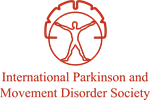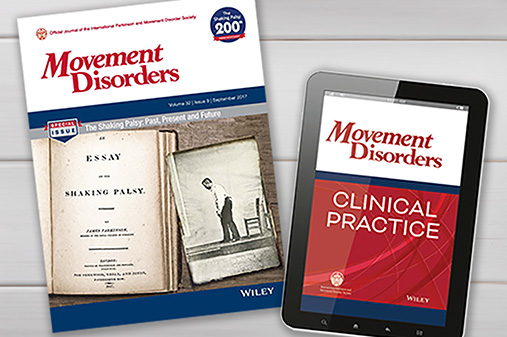Disease modification and Parkinson’s disease: Clinical trial design and population selection • 2025 MDS Congress
Dr. Mitra Afshari: [00:00:00] Aloha from beautiful Honolulu, Hawaii, and welcome to the MDS Podcast, the official podcast of the International Parkinson and Movement Disorder Society. I'm Mitra Afshari, an associate editor of the podcast series, and your host today. Today we are really lucky to have Professor Tanya Simuni from Northwestern University in Chicago, Illinois, in the United States. Along with so many her titles, she's notably one of the leaders of the longstanding Parkinson's progression markers initiative, the PPMI in the US, and just an all-around expert in Parkinson's disease and the history of disease-modifying trials in Parkinson's. So thank you so much for joining us today, Tanya.
View complete transcript
Prof. Tanya Simuni: Aloha. Thank you for the invitation.
Dr. Mitra Afshari: This is a special moment for me because I'm an alumni of the Northwestern Neurology Residency program and you directed the [00:01:00] residency program at the time that I was there, so I've really looked up to you for a very long time.
Prof. Tanya Simuni: Very proud of where you are.
Dr. Mitra Afshari: Thank you. Tanya, so we'd like to take this opportunity to hear from you, and hear from years of wisdom regarding PD disease modification.
We have about 30 years under our belt of disease modifying trials in Parkinson's disease, which is absolutely incredible. We're very fortunate. However, sadly we haven't had many successes.
And it seems like there's two kind of big reasons why we haven't been successful. One, perhaps, we're intervening a little bit too late in the disease. And then two, perhaps, our PD patients are actually much more diverse than we think they are, and the therapies need to be a bit more targeted and personalized.
So for the first problem, we now have all heard about the new biological staging framework that you've been a [00:02:00] part of developing the last couple years to kind of address that first problem.
We would love to hear your perspective on this, and a little bit more in your own words, about the new staging system and how it will be incorporated into new trials over the next decade, if there are any trials in the pipeline that are working on incorporating it now, or if we're still a little bit too young in order to do that. And also what you see as the primary challenges that may come up.
Prof. Tanya Simuni: Mitra, you have hit on two major challenges in us having the first success in successful disease-modifying trials. Having said that, we've learned a lot on the way, so let's dissect it.
Let's start with, are we intervening too late? Historically, a majority of disease-modifying trials targeted the population defined as [00:03:00] 'newly diagnosed' before they start symptomatic therapy.
And the reason for newly diagnosed is the earliest time point possible, until now, for us to identify those people.
No therapy: it's a very simple explanation. Fortunately, we have very successful, effective symptomatic therapy. But once they started, it is next to impossible to dissect the effect of your experimental disease-modifying intervention over and independent from symptomatic therapy, because of the degree of efficacy and because of the endpoints that we're using.
So how can we approach that? There is the population that currently is defined as prodromal population. That is the population that has clinical phenotype, that historically over long term [00:04:00] observational data, supported by pathology, are at higher risk of developing the clinical disease that is currently defined as Parkinson's disease.
There have been no therapeutic, disease-modifying studies in that population for a couple of reasons. One reason is, how do you define that population? It's very broad. The second reason is, how to identify within that population, people who are expected to progress within period of time that is feasible for therapeutic study. We cannot run drug studies for 20 years. No one will participate, and no one will pay. And the third one, which is very important, is lack of regulatory statue for that term of prodromal population.
So now, where does the newly, a year ago, proposed [00:05:00] biological definition and staging framework come in?
What we as a large group of stakeholders, including academicians, industry, foundations, importantly people with lived experiences, have proposed that in order for us to increase success of therapeutic trials, we need to define the disease biologically. And what that means, that we have learned tremendous amount of the biology of the disease.
We know that the underlying proteinopathy is synuclein aggregation, and we finally have a biomarker of synuclein pathology that we can measure and test in living individuals. Based on all those breakthrough discoveries, the biological definition of the disease is very simple. A person who has, synuclein pathology, based [00:06:00] on any validated test, he has biological disease.
Let me caution, this is the research framework. Not everyone will progress to the clinical phenotype of the disease, but my analogy is someone who has elevated cholesterol, hopefully will never have a heart attack, but we need to know the elevated cholesterol and intervene at that point for them not to have the heart attack.
So that's the definition. The other pillar is consistent with a pathology. And both of those are that majority of individuals have dopaminergic dysfunction. And actually that's the prerequisite for the motor syndrome of Parkinsonism, which defines the clinical diagnosis of Parkinson's disease today. So these are the biological pillars and obviously genetic underpinning side, essentially.
So the definition is the starting point. It's not [00:07:00] gonna identify the narrow, very selected population that you want to recruit into the studies. That's where you need to stage the individuals. Our proposal of the staging, again, it's a research framework — it's not to be used in the clinic — is that the clock starts from the biology, biomarkers purely. Population, no clinical phenotype. And that population can be identified only in the research setting is stage one. Stage two clinical phenotype, biomarkers, but no functional impairment. And then the individuals whom we currently define as newly diagnosed majority of them are stage three. And that is defined by biology, clinical phenotype, slight functional impairment, and then progression of the stages is based on increasing [00:08:00] degree of functional impairment.
This is a very long introduction to the question that you've asked. How do we move earlier? So with this framework, we can identify those individuals with the right biology before the classical diagnosis of Parkinson's disease.
Stage two, either just with biomarker of synuclein pathology, or both biomarkers of synuclein pathology and dopaminergic dysfunction to recruit into the studies.
Dr. Mitra Afshari: That was incredible. Thank you for that amazing summary. It's so wonderful to hear it in your own words. We can read the papers ad nauseum, but hearing a summary from you and how you see it with all the wisdom behind it, and all the experience that you have behind it, is really incredible.
So, Tanya, for the second problem, the second kind of issue: you've been a part of, PPMI and also the big [00:09:00] Parkinson's Foundation PD generation genetic study, where there's really a huge push to genetically sequence as many PD patients as possible, with the goal being, let's increase our resolution per se, on PD biology and develop more targeted therapies.
So do you think that genetics will be the key or perhaps maybe just a good starting point in terms of developing more targeted therapies for the newer disease modifying trials that will be using some of the new staging system?
Prof. Tanya Simuni: Genetics are definitely the pillar. Reflected by the fact that genetically targeting therapies are in the clinic, right? And there are multiple reasons for that. That's with advance the therapeutics. In cancer, that's what advanced therapeutics in a number of other diseases, that [00:10:00] gets us closer to that concept of precision medicine.
And as you well know, GBA-targeting therapies are in the clinic, LRRK-targeting therapies, in the clinic. It obviously makes scientific sense and rationale to test LRRK-targeting therapists in the LRRK-positive individuals. And similarly, GBA.
An essentially important unanswered question is whether those therapies are applicable to people who do not carry those monogenic variants. A lot of scientific evidence supports the fact that the answer is yes. But again, that's where the precision medicine comes in. How do we identify people with "LRRK" pathobiology? How do we identify people with GBA like pathobiology?
[00:11:00] As of today, there are no answers. There are some front-running programs that are recruiting individuals in the LRRK- targeting therapeutic study. But again, that has not been defined for the field. And one of the very practical reasons for that, if we restrict LRRK-targeting therapy to LRRK-positive individuals, we'll be treating 1-4% of people with Parkinson's.
So more to come, but definitely that's where the field is moving.
Dr. Mitra Afshari: Wonderful. And so tomorrow, you'll be reviewing a lot of these trials, recent trials, ongoing trials in PD disease modification at one of the plenaries. And I know you'll have a lot of ground to cover tomorrow, but could you give us a brief summary of the different overarching mechanisms of action that have been covered in previous trials. We talked about the genetic ones.
Prof. Tanya Simuni: We cover genetics. Synuclein-targeting therapies [00:12:00] definitely are at the front runners of disease-modifying interventions. Why? Because again, synuclein aggregation is the cornerstone, confirmatory pathology for the disease. SNCA genetic variant, fully penetrant, is associated with a 100% risk of developing clinical phenotype of Parkinson's or cognitive phenotype.
So all the pointers are leading in that direction. And as there have been a number of studies in phase two development, testing synuclein targeting therapies. The first studies to come in were monoclonal antibodies. More recently, read out study is oral synuclein aggregation molecule. None of those studies in phase two read out positive. Some read out definitively negative. [00:13:00] One synuclein monoclonal antibody therapy, Prasinezumab, developed by Roche, has reported results of it's phase two study. As everyone knows it's in public domain. They miss their primary endpoint, but interpreted the data that they had enough of the signals of efficacy in the pre-specified secondary endpoints that led to the decision to go into the phase three study, which I think should be truly celebrated by the community.
Whether the study will be positive or negative, the data will show, but the field would learn a tremendous deal from that.
Dr. Mitra Afshari: And now that we have the new biological framework, do you believe that we need to potentially revisit some of the compounds that were tested in the past in the right patients?
Prof. Tanya Simuni: That's a loaded question, right? Because you are [00:14:00] asking the question whether the studies failed because we tested wrong drug, or whether the studies failed because we tested wrong population, or because of the wrong endpoint.
It might be all three. I do believe that any study after it reads out undergoes extensive post-hoc analysis, which is absolutely legitimate and necessary, provided that the entities that are doing that reporting it as post hoc exploratory hypothesis generating analysis. The challenge with post-hoc analysis for biological definition and staging resides in the fact that up until now, there are few studies required collection of biospecimens, specifically CSF, required for biological characterization. The field is changing. And we'll get to that in a minute, to your first question, are there studies using [00:15:00] biological framework. But there are a lot of learnings that can be carried forward as of today. Just as an example, we've published the data on staging of recently completed studies. Observational PPMI study, which is ongoing. Two very relevant interventional studies, monoclonal antibodies. One was the first Pasadena study with Prasinezumab, and the other one Biogen study with Cinpanemab.
And remarkable results when you stage the subset of population that had required biomarkers. About 75% of them are stage three NSD, as you expect them, newly diagnosed population. About 25% are earlier stage, so that might be the population that you want to intervene on the concept of that early intervention. About 10% are stage four. [00:16:00] And if you look at progression of stage four versus stage three, as expected, if the separation is functional impairment, stage four progresses faster.
Why is it relevant for the clinical trials? Variants of the population is the biggest enemy of reliable read out of the studies.
So these are the learnings that can be taken into the studies today. Biological characterization of the population doesn't make sense to test synuclein-targeting therapies in people who don't have synuclein. Right? Homogenizing the population, reducing the variance of the population to have reliable readout.
And to address your earlier question, are there already studies that are using staging framework to recruit? Yes. There are. In the proof of concept phase. Synuclein testing, synuclein defining the population, and obviously recruiting only synuclein-positive individuals.
We [00:17:00] are launching a platform trial path to prevention in biologically defined prodromal population NSD stage 2B, to test potential disease-modifying intervention. Very excited about it. We are very clearly calling it learning phase 2A study. There is a lot of learning to be done in that first to test therapeutics in that population. But the field is definitely moving, and has to move in that direction.
Dr. Mitra Afshari: Do you see digital outcome measures as a potential tool to add to our toolbox? So now with the new biological definition, we likely need some newer outcome measures. We're in a world of everything digital. Everything technology. I'm not gonna throw out the word ai, but how do you see that fitting into the picture?
Prof. Tanya Simuni: So digital [00:18:00] endpoints have been looked at for a while. I have a slide with thousand different gadgets on the table and with a question, which one should I use? It actually is quite frustrating that despite real explosion of the digital measures that are in consumer hands, all of us, wear a watch, all of have phones, so here it is. Why can't we develop a measure that is better than the clinician investigator eye to assess progression? Because that's what we need for the clinical trials, right? Reliable measure that would read out, especially in the early phase studies, over a short period of time. And there are a couple explanations of that.
There has not been, despite gazillions of tools, there has not been consorted effort to develop these in the [00:19:00] regulatory compliant way. And what the regulators will ask: technical validation, clinical validation, clinical meaningfulness. What does z-score change of 0.002, if it is statistically significant, what does that mean for the function of the individual? That work is going on now. A number of entities are putting a lot of work into it. Michael J. Fox Foundation has a large portfolio supporting those efforts. But as of today, unfortunately we don't have a cookbook or a toolkit and to say, if you are developing a phase two study, this is your digital measure that will read out.
We have a toolkit to say, if you're developing your phase two study, you should include this at minimum as your exploratory measure and probably is your secondary endpoint.
Dr. Mitra Afshari: It was such a pleasure chatting with you [00:20:00] today, Tanya. We can't wait for your talk . And I'm very proud to say that I was one of your previous trainees. I've learned a lot from you. So thank you for taking the time to join us today, and Mahalo.
Prof. Tanya Simuni: My pleasure, and thank you very much for the invitation. Thank you.

Tanya Simuni, MD, FAAN
Northwestern University
Chicago, USA









